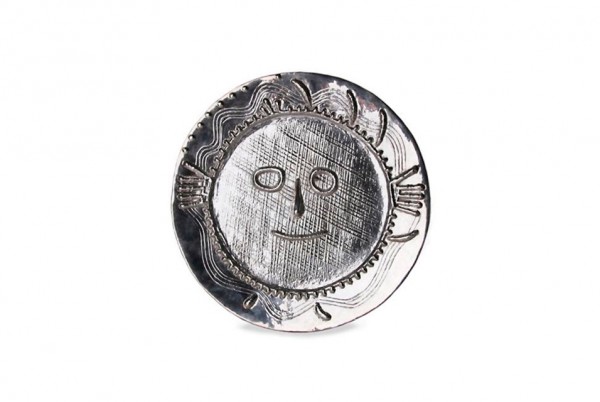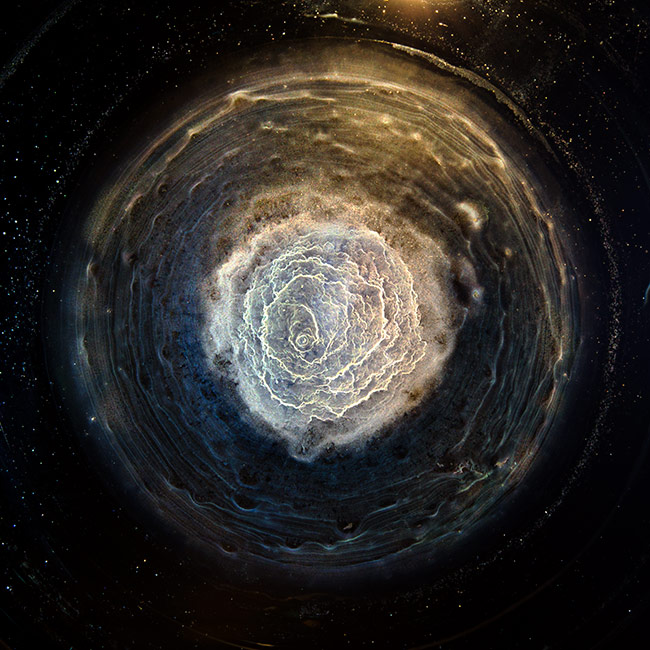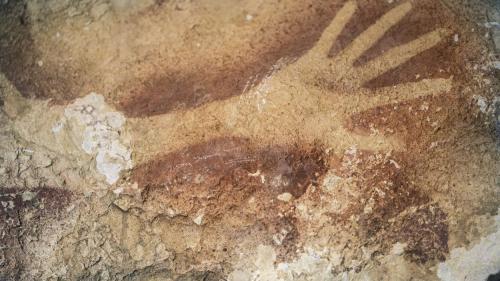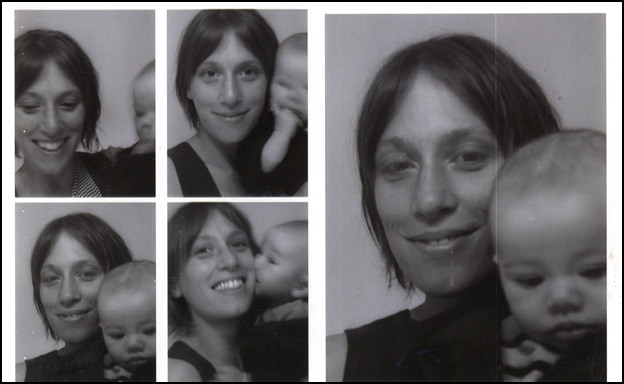Art News and Updates from Gallereo
All the latest news from the art world, as well as what's happening here at Gallereo. If you've built a gallery at Gallereo, let us know about your experience and you and your site could feature in our blog in the coming weeks.Saturday 06th December 2014Picasso Stolen from Miami Art Fair Art fairs are becoming de rigeur in the modern art world, growing to replace all the traditional gallery models in terms of popularity and sales volume in a very short time. It seems like popularity isn't the only thing that they're growing in, however, as this year a piece was stolen from a prominent Miami art fair - just probably not the one you're thinking of. Art Basel in Miami Beach is in full swing, but they're not the ones who have had something stolen, as it turns out. A smaller art fair, Art Miami, is the center of the theft, which occurred in the last few days.
Art fairs are becoming de rigeur in the modern art world, growing to replace all the traditional gallery models in terms of popularity and sales volume in a very short time. It seems like popularity isn't the only thing that they're growing in, however, as this year a piece was stolen from a prominent Miami art fair - just probably not the one you're thinking of. Art Basel in Miami Beach is in full swing, but they're not the ones who have had something stolen, as it turns out. A smaller art fair, Art Miami, is the center of the theft, which occurred in the last few days.
Wednesday 03rd December 2014Artist Spotlight: Emilio Cresciani Primarily, art is about affecting the thoughts of others. Whether it's instilling a sense of wonder, joy, sadness or anger, art is found in many places that we might not think to look - that's one of the primary responsibilities of an artist. Enter Emilio Cresciani, a photographer based in Sydney, Australia, who has been dubbed by local media as the 'Picasso of bird poo'. While out for a walk one day in the undeniably beauty of Venice, Italy, while most would be gazing at architecture and sculpture, he was struck by the patterns created by bird excrement, and began a photo series that culminated in a series entitled 'Flight Patterns'.
Primarily, art is about affecting the thoughts of others. Whether it's instilling a sense of wonder, joy, sadness or anger, art is found in many places that we might not think to look - that's one of the primary responsibilities of an artist. Enter Emilio Cresciani, a photographer based in Sydney, Australia, who has been dubbed by local media as the 'Picasso of bird poo'. While out for a walk one day in the undeniably beauty of Venice, Italy, while most would be gazing at architecture and sculpture, he was struck by the patterns created by bird excrement, and began a photo series that culminated in a series entitled 'Flight Patterns'.
0 Comments
Saturday 29th November 2014Holiday Gifts for Artists It's that time again - and this year, with our suggestions, every artist in your life will be sure to appreciate their gifts. Whether they're for a loved one or a special treat for yourself, this is a fantastic time to get great deals on art supplies, no matter if you're restocking your supplies or branching out into some new experiments you might otherwise not bother with.
It's that time again - and this year, with our suggestions, every artist in your life will be sure to appreciate their gifts. Whether they're for a loved one or a special treat for yourself, this is a fantastic time to get great deals on art supplies, no matter if you're restocking your supplies or branching out into some new experiments you might otherwise not bother with.
And of course, if none of those ideas suit, it's always a good idea to help the artists in your life with a Gallereo subscription! ;-)
Wednesday 26th November 2014Art Basel in Miami We've frequently discussed the recent worldwide trend towards the art fair, and how it's growing to supplant traditional gallery sales. Some gallery owners absolutely love it, and some gallery owners find it crude and tasteless, but no matter which side of the fence you're on, it's impossible to deny that they have taken centre stage in the art world. Popping up in cities all over the world, the art fair has become a staple. Arguably, the fair that started it all, Art Basel, is just about to launch its next iteration in Miami.
We've frequently discussed the recent worldwide trend towards the art fair, and how it's growing to supplant traditional gallery sales. Some gallery owners absolutely love it, and some gallery owners find it crude and tasteless, but no matter which side of the fence you're on, it's impossible to deny that they have taken centre stage in the art world. Popping up in cities all over the world, the art fair has become a staple. Arguably, the fair that started it all, Art Basel, is just about to launch its next iteration in Miami.
It's become so popular there's even a name for the impact the fair has had on development around the city: the Miami Effect. Not exactly creative, perhaps, but the developments sure are.
Friday 21st November 2014Artist Spotlight: Ernie Button Single malt aficionados will no doubt be aware that there are several distinct types of whisky, hailing from various parts of Scotland (there are others from other locations around the world, but to be true to form, single malt scotch comes from Scotland). Islay whiskies, with their dark, smoky peat flavours, tend to be mercurial in the glass, requiring some experimentation to produce a pleasing effect, but Speyside varieties are much more cooperative, regularly creating appealing patterns. The final touch in Button's process is the addition of coloured lights beneath the glass surface which he and the whisky collaborate on (presumably, not always an recently emptied glass, or the project would likely lose direction fairly quickly). The careful lighting helps produce the truly otherworldly images, seeming like landscapes out of a science fiction movie, or perhaps even some elaborate dreamscape. As it turns out, the science behind the process is equally remarkable, as Button found out when he began to investigate the nature of fluid dynamics. Dr. Howard Stone, a professor at Princeton University in the United States, was equally fascinated by the imagery produced by Button, despite not being a fan of whisky in general. In fact, one of his team members, Dr. Hyoungsoo Kim, presented the results of their research at a meeting of the American Physical Society’s Division of Fluid Dynamics, which is much closer to scientific regard than most artists reach. It just goes to show that there often is an appealing intersection between science and art, even if some scientists find the idea abhorrent. Many a great artist has had a passion for a good stiff drink. Whether writer or painter, sculptor or poet, a great deal of our cultural legacy is inextricably intertwined with alcohol, for better or for worse (and sometimes, it's a bit of both). For Ernie Button, however, alcohol has taken on a whole new level of artistic meaning. A photographer based in Phoenix, Arizona, Button had a taste for single malt whisky, and one evening before cleaning up his glass, he noticed that the last drop or two of whisky in the glass had dried into a remarkably patterned film. Naturally, his photographic instincts kicked in and he decided to begin to experiment with the concept.
Many a great artist has had a passion for a good stiff drink. Whether writer or painter, sculptor or poet, a great deal of our cultural legacy is inextricably intertwined with alcohol, for better or for worse (and sometimes, it's a bit of both). For Ernie Button, however, alcohol has taken on a whole new level of artistic meaning. A photographer based in Phoenix, Arizona, Button had a taste for single malt whisky, and one evening before cleaning up his glass, he noticed that the last drop or two of whisky in the glass had dried into a remarkably patterned film. Naturally, his photographic instincts kicked in and he decided to begin to experiment with the concept.
You can view the entire collection and order prints from Button's website, located here.
Wednesday 19th November 2014Cosby Art Exhibit Continues Take, for example, the famous yet currently-embroiled comedian, Bill Cosby. Like many rich and successful people, he has amassed a private collection of artwork that rivals many galleries, and like many rich and successful people, he has chosen to share that with a more recognizable gallery in hopes of sharing the work he has collected, and less obviously, add to his prestige and reputation. To that end, the National Museum of African Art, a subsidiary of the world-famous Smithsonian Institution in Washington, D.C., has been displaying works from the collection of Bill and Camille Cosby as part of the 'Conversations: African and African American Artworks in Dialogue' exhibit, which is planned to run until 2016. However, as anyone who has so much as touched a newspaper or a computer will no doubt be aware, Bill Cosby is currently at the centre of a storm of accusations of sexual abuse from a growing number of women. While no formal charges have yet been laid against Cosby, many questions have been raised about whether or not Cosby's art should still remain a part of the Conversations exhibit. Until recently, the Smithsonian has refused to comment on the issue, but has finally relented and released a statement that manages to say very little other than disavowing any connection between the appropriateness of the collection's use and Cosby's alleged actions. The statement reads: “The National Museum of African Art’s mission is to inspire conversations about the beauty, power and diversity of African arts and cultures. We began planning for the “Conversations” exhibition two years ago to help showcase the history of American art created by persons of African descent. It brings the public’s attention to artists whose works have long been omitted from the study of American art history. We are aware of the controversy surrounding Bill Cosby, who, along with his wife Camille, owns many of the works in the “Conversations” exhibition. Exhibiting this important collection does not imply any position on the serious allegations that have been made against Mr. Cosby. The exhibition is centrally about the artworks and the artists who created them.” An admirable goal, but the art world doesn't exist in a vacuum - we all live there.  Much of the art world thrives on controversy. It's one of the many engines that drives gossip throughout humanity, and artists are no exception. The very nature of the work we do challenges the way people see the world, and how they interact with it. But as the trend of exhibiting the collections of prominent celebrities continues, there is often some unintended controversy that gets dragged into the fray along with the art itself.
Much of the art world thrives on controversy. It's one of the many engines that drives gossip throughout humanity, and artists are no exception. The very nature of the work we do challenges the way people see the world, and how they interact with it. But as the trend of exhibiting the collections of prominent celebrities continues, there is often some unintended controversy that gets dragged into the fray along with the art itself.
0 Comments
Friday 14th November 2014Kurt Perschke and the Big Red Ball Sometimes, copyright infringement is a murky situation - difficult to prove, as in the case of derivative artworks, satire, and convergent design - but sometimes it's pretty hard to deny. If you're a relatively well-known artist with a signature piece, it can be hard to see how others managed to miss it. Enter the artist Kurt Perschke, whose most recent project involves an installation of a 15 foot high red plastic ball near various major landmarks around the world. Named the RedBall project, this continually unfolding and ongoing project was started 13 years ago, so it's not exactly a question of prior art - and yet earlier this year, Perschke found some undeniable similarities between RedBall and a recent marketing campaign by petrochemical giant Shell.
Sometimes, copyright infringement is a murky situation - difficult to prove, as in the case of derivative artworks, satire, and convergent design - but sometimes it's pretty hard to deny. If you're a relatively well-known artist with a signature piece, it can be hard to see how others managed to miss it. Enter the artist Kurt Perschke, whose most recent project involves an installation of a 15 foot high red plastic ball near various major landmarks around the world. Named the RedBall project, this continually unfolding and ongoing project was started 13 years ago, so it's not exactly a question of prior art - and yet earlier this year, Perschke found some undeniable similarities between RedBall and a recent marketing campaign by petrochemical giant Shell.
Curiously enough, this isn't the first time Perschke has had issues with a large company's advertisements. In fact, just last year, he filed a lawsuit against a French company, Edenred, and they settled out of court with undisclosed terms. Perschke hasn't yet decided whether he is going to file a similar lawsuit against Shell, but as he said to the Guardian, "It is my creation. I think it is lazy. My work has a history, it has been around for years and to appropriate it maybe seems more than lazy – even a little dangerous. The larger issue is the impact on the work, I don’t want the work impacted or associated in this way. We’ve worked for many years on a project which really does bring joy and surprise to people and we don’t want it co-opted.”
Wednesday 12th November 2014Art vs Design.jpg) Many designers have often railed against the perception that their work is not art. A quick tour of the prominent sites around the net will reveal a number of bitter back and forth rivalries, and probably an equal number of admittedly more silent spectators who don't seem troubled one way or the other. It really all comes down to what your individual perception of art really is, a topic that has plagued and entertained the art world since the end of the 19th and the beginning of the 20th centuries, when modern art was finally coming into its own.
Many designers have often railed against the perception that their work is not art. A quick tour of the prominent sites around the net will reveal a number of bitter back and forth rivalries, and probably an equal number of admittedly more silent spectators who don't seem troubled one way or the other. It really all comes down to what your individual perception of art really is, a topic that has plagued and entertained the art world since the end of the 19th and the beginning of the 20th centuries, when modern art was finally coming into its own.
Friday 07th November 2014Ancient Art Examining various rock art formations and paintings across Southeast Asia, a team from Griffith University lead by Professor Paul Taçon discovered that many of the formations dated to 40,000 BCE, and are widespread across all of Southeast Asia, from Indonesia to China to Malaysia and Thailand. This may not seem too remarkable, at first, until you realize that up until this study, many scholars had theorized that artistic practices had first evolved in Europe and then spread outwards via human migrations as tribes expanded and explored new areas. Those of you with a sociological or anthropological background will no doubt immediately notice the flaw in that Eurocentric view and be unsurprised by it, but these findings are solid evidence that artistic practices evolved much earlier than are evidenced in Europe, and suggest that as early humans migrated out of Africa, they took a thriving artistic practice with them, instead of developing one along the way. This theory would likely have been disproven much earlier, if it weren't for the fact that the unique geology of Africa makes it less likely to find artworks protected from the elements, which can rapidly decay artwork to the point of unrecognizability. It is often theorized that the reason we find cave paintings dated from that time period isn't because early humans only painted in caves, but rather because those are the only places where they have been preserved.  When you think of the earliest examples of artwork ever discovered, you probably think of cavemen painting on walls. Primitive hunting scenes, and extremely crudely stylised figures of men and women in various basic layouts. You may even be able to call to mind some of the more well-known examples that you probably learned about in school - the cave paintings in Lascaux, France, being one of the most popular examples in the latter half of the 20th century. The earliest recorded examples in Europe are dated to roughly 30,000 BCE, and are found in Spain, in the El Castillo cave. It may surprise you to learn, then, that these are not even remotely close to the earliest recorded human artwork, as a recent study discovered.
When you think of the earliest examples of artwork ever discovered, you probably think of cavemen painting on walls. Primitive hunting scenes, and extremely crudely stylised figures of men and women in various basic layouts. You may even be able to call to mind some of the more well-known examples that you probably learned about in school - the cave paintings in Lascaux, France, being one of the most popular examples in the latter half of the 20th century. The earliest recorded examples in Europe are dated to roughly 30,000 BCE, and are found in Spain, in the El Castillo cave. It may surprise you to learn, then, that these are not even remotely close to the earliest recorded human artwork, as a recent study discovered.
Sometimes, when struggling with a piece of work in the present day, it can be helpful to think about the fact that human beings have been creating for longer than we can easily imagine. It's an inextricable part of our consciousness, and no matter how difficult it can seem at the time, it's literally part of us to create.
Wednesday 05th November 2014Artist Spotlight: Lenka Clayton CIgarette butts, coins, bubblegum and buttons are among the wide variety of pieces included in the work, entitled '63 Objects Taken From My Son's Mouth', which is currently on display in the Crystal Bridges Museum of American Art in Arkansas, USA. While perhaps not the most illustrious of venues, it nevertheless is an interesting look at how potentially life-threatening events metamorphose in our memories as time progresses. "To be included I had to physically extricate the object myself, and have a real fear he was about to swallow it," she explained in an interview with the Daily Telegraph. "What interested me afterwards was when something so terrible and life-threatening turned into something else - a story. From a moment of horror came something like humour." The piece is actually part of a larger project, which she has titled the Artist Residency in Motherhood. "I aimed to embrace the fragmented mental focus, exhaustion, nap-length studio time and countless distractions of parenthood as well as the absurd poetry of time spent with young children as my working materials and situation, rather than obstacles to be overcome," Clayton explained. For any artist parent who's ever had their creativity plunged into the doldrums by lack of sleep and exhaustion (although it's sometimes true that those can be creative drivers), it's a clarion call of possibility, an inspiring look at how the most basic form of creativity - creating a tiny new life - can also push us to new artistic and creative heights. While time in the studio may be short, if every experience you have acts as a potentially inspiring moment, actual studio time might become less and less important to the creative act itself. You can read more about the project at Clayton's website, found here. Take heart, sleepy parents!  At first blush, Lenka Clayton's newest project is a bit unremarkable. A simple collection of objects that could have been found in anyone's junk drawer, forgotten coat pocket, or even a street gutter. Yet as the 63 starkly paced objects begin to take on meaning, the story behind them unfolds into a smile, or even a laugh. The various objects, ranging from the mundane to the disgusting, are all objects that were removed from the mouth of her baby son in the nick of time, just before they became a potential trip to the emergency room.
At first blush, Lenka Clayton's newest project is a bit unremarkable. A simple collection of objects that could have been found in anyone's junk drawer, forgotten coat pocket, or even a street gutter. Yet as the 63 starkly paced objects begin to take on meaning, the story behind them unfolds into a smile, or even a laugh. The various objects, ranging from the mundane to the disgusting, are all objects that were removed from the mouth of her baby son in the nick of time, just before they became a potential trip to the emergency room.




